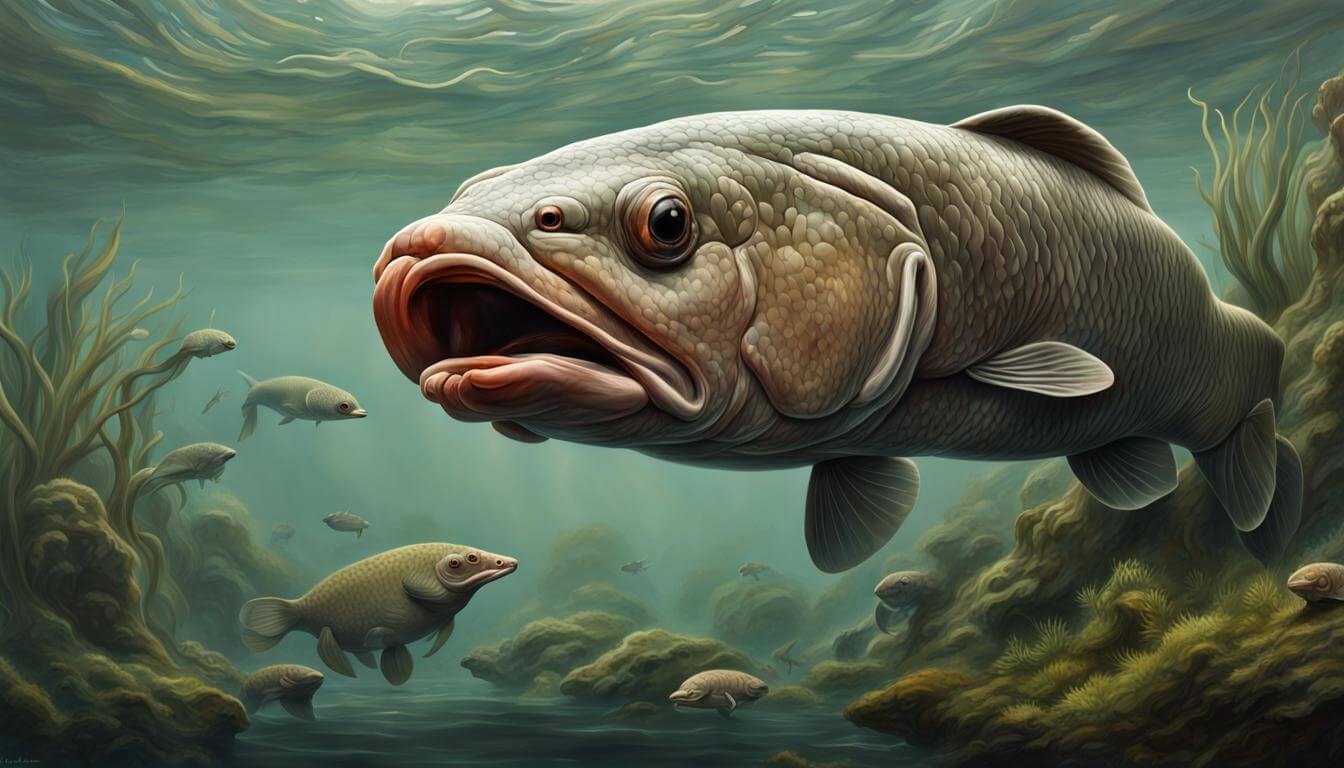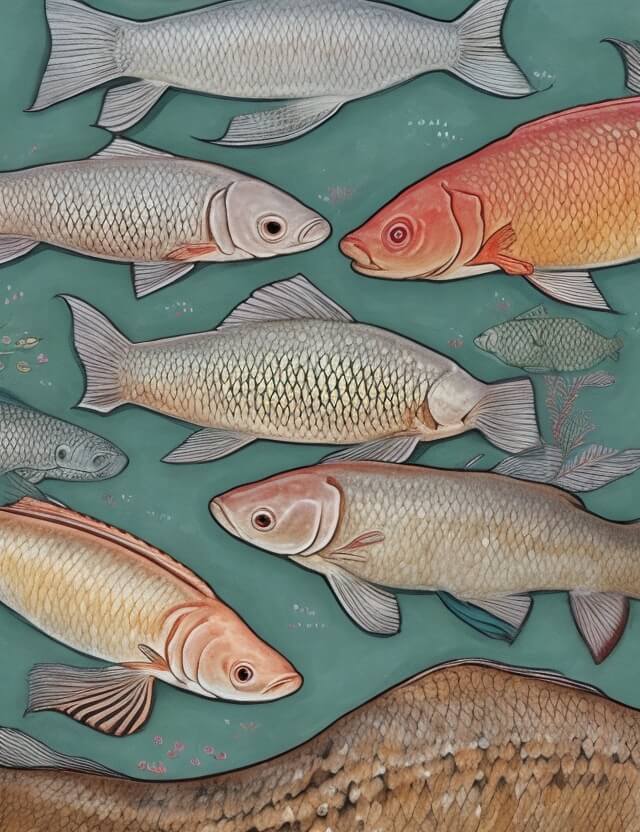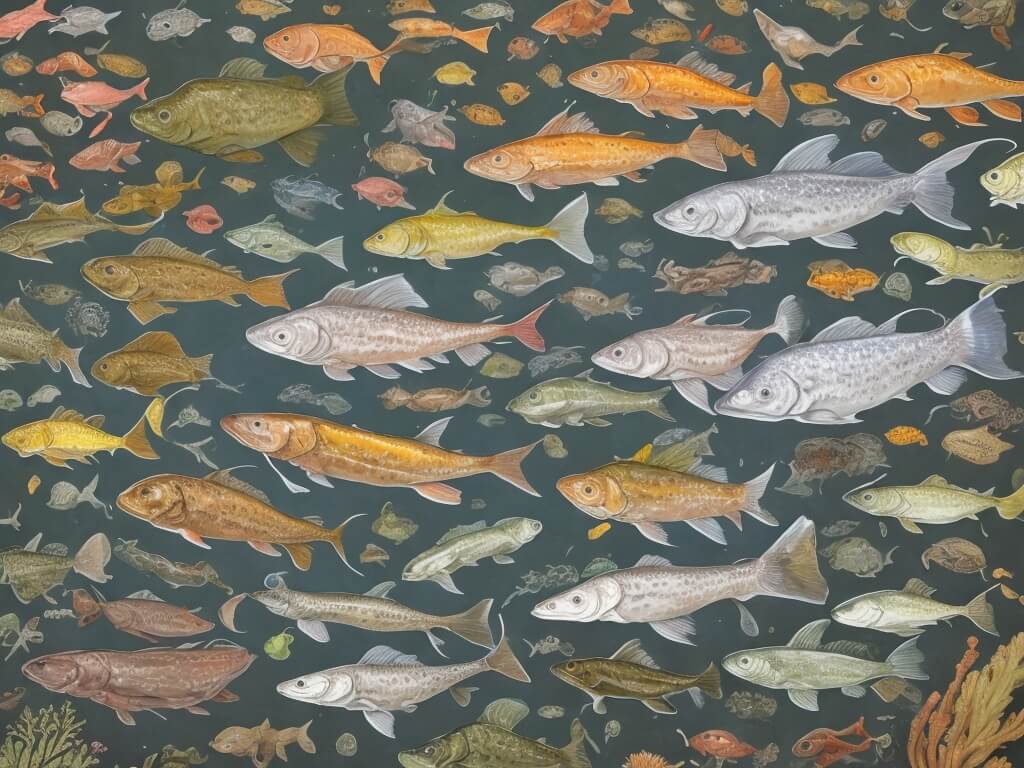Explore the intriguing world of lungfish, archaic freshwater fishes with a history dating back over 400 million years. From the rare Australian barramundi to the South American and African lungfishes, discover their unique adaptations, nocturnal behaviors, and the fascinating ways they breathe.

LUNGFISH, any of a group of archaic air-breathing freshwater fishes, making up the order Dipnoi. Unlike most other fishes, lungfishes have internal organs that are related in function and embryologic origin to the lungs of land vertebrates. Lungfish were first known from fossil remains, the earliest of which date from the early Devonian period, more than 400 million years ago. There are six living species of lungfish—one in Australia, one in South America, and four in Africa.
The Australian lungfish, or barramundi (Neoceratodus forsteri), the only living membfer of the family Ceratodontidae, is a rare and legally protected fish found only in two small rivers in the southeastern part of Queensland. Anatomically it is the most primitive of the living lungfishes. It may reach 6 or 7 feet (about 2 meters). The elongated trunklike body is covered with large scales and has a tapering tail fin connected to dorsal and anal fins. Its paired pectoral and pelvic fins, used for support and locomotion, are muscular, scaly paddles with marginal fringes of rays. The barramundi can live out of water for 8 to 10 hours if wrapped in damp cloth or vegetation. But it depends on gills as well as on lungs for obtaining oxygen and under normal circumstances is not found out of water. It is, however, able to live in highly stagnant water, where it rises to the surface at frequent intervals to fill its single lung with fresh air. The barramundi is generally nocturnal and feeds on water plants and small animals that it grinds with its platelike teeth.
The South American lungfish (Lepidosiren paradoxa) and the four African lungfishes (genus Protopterus) are classified together in the family Protopteridae. They are all elongate, eel-like fishes with relatively small scales and slender whiplike pectoral and pelvic fins. Most are 2 1/2 to 3 feet (75-90 cm) long but larger examples are not rare. The young resemble some salamanders in having feathery external gills and a ventral sucker with which it adheres to vegetation. Protopterids have fewer gills than the barramundi and depend to a greater extent on their paired lungs, through which they obtain about 95% of their oxygen. Protopterids will drown if prevented from coming to the surface to breathe. They can live out of water for a long time. During the dry season, they burrow in the muddy bottom of a swamp and form a thick mucous cocoon that becomes encapsulated in a dry shell of mud. They can aestivate in this state, with their metabolism at a very low rate, for as long as 18 months, but in nature they need only wait until the next rainy season floods the swamps.

What are the characteristics of lungfish?
Lungfish possess several distinctive characteristics that set them apart from other fishes. Here are some key features of lungfish:
Internal Lungs: One of the most remarkable features of lungfish is their possession of internal lungs. These lungs are adapted for breathing air, making lungfish one of the few fish species capable of aerial respiration. This adaptation allows them to survive in oxygen-poor water and even breathe air when necessary.
Primitive Traits: Lungfish are often considered living fossils, displaying primitive characteristics that link them to early stages of vertebrate evolution. Their anatomy and internal organs show similarities to those of the first tetrapods, the vertebrates that eventually gave rise to amphibians, reptiles, birds, and mammals.
Elongated Body: Lungfish typically have an elongated, eel-like body shape. This streamlined form allows them to move easily through water.
Pectoral and Pelvic Fins: Their pectoral and pelvic fins are muscular and paddle-shaped, resembling limbs. These fins aid in both support and locomotion, allowing lungfish to move across the substrate.
Scale Characteristics: Lungfish generally have relatively small scales compared to some other fish species. The scales may be thin and flexible, contributing to the fish’s overall flexibility.
Gills and Lungs: While lungfish have lungs for aerial respiration, they also possess gills for extracting oxygen from water. The reliance on both gills and lungs varies among different species of lungfish.

Ability to Survive Out of Water: Some species of lungfish, such as the Australian lungfish, can tolerate being out of water for extended periods. They may use damp environments or vegetation to keep their skin moist and can absorb oxygen through their skin.
Feeding Habits: Lungfish are omnivores, feeding on a variety of food sources. Their diet may include water plants, small animals, and invertebrates. They often have specialized platelike teeth for grinding their food.
Estivation: Certain lungfish species have the ability to undergo estivation during dry seasons. They burrow into the mud at the bottom of swamps, creating a mucous cocoon, and can survive with a low metabolic rate until the next rainy season.
Distribution: Lungfish are found in various parts of the world. There are species in Australia, South America, and Africa, each adapted to the environmental conditions of their respective regions.
These characteristics collectively make lungfish a unique and fascinating group of fishes, well-adapted to diverse aquatic environments and demonstrating survival strategies that have persisted for millions of years.